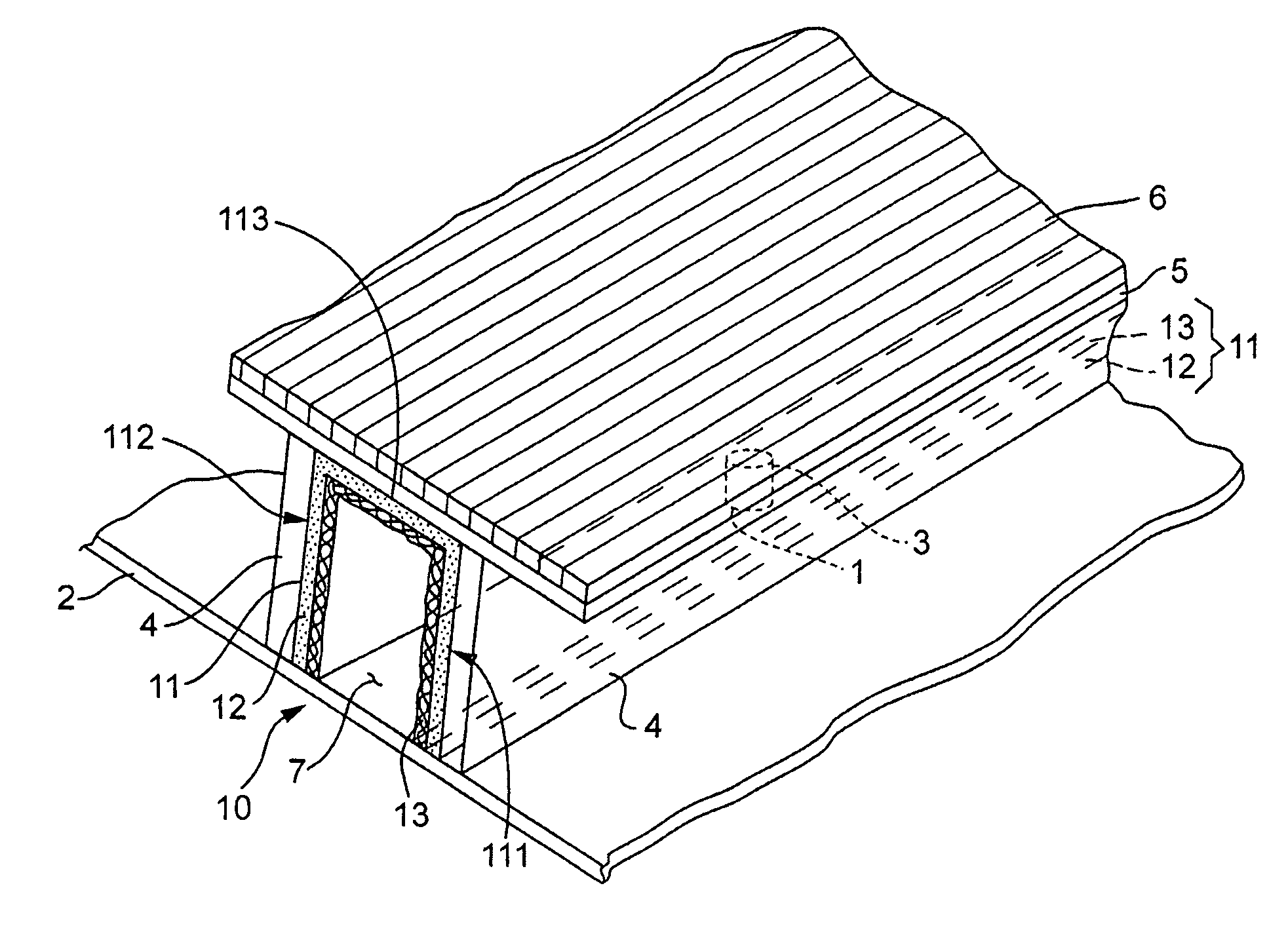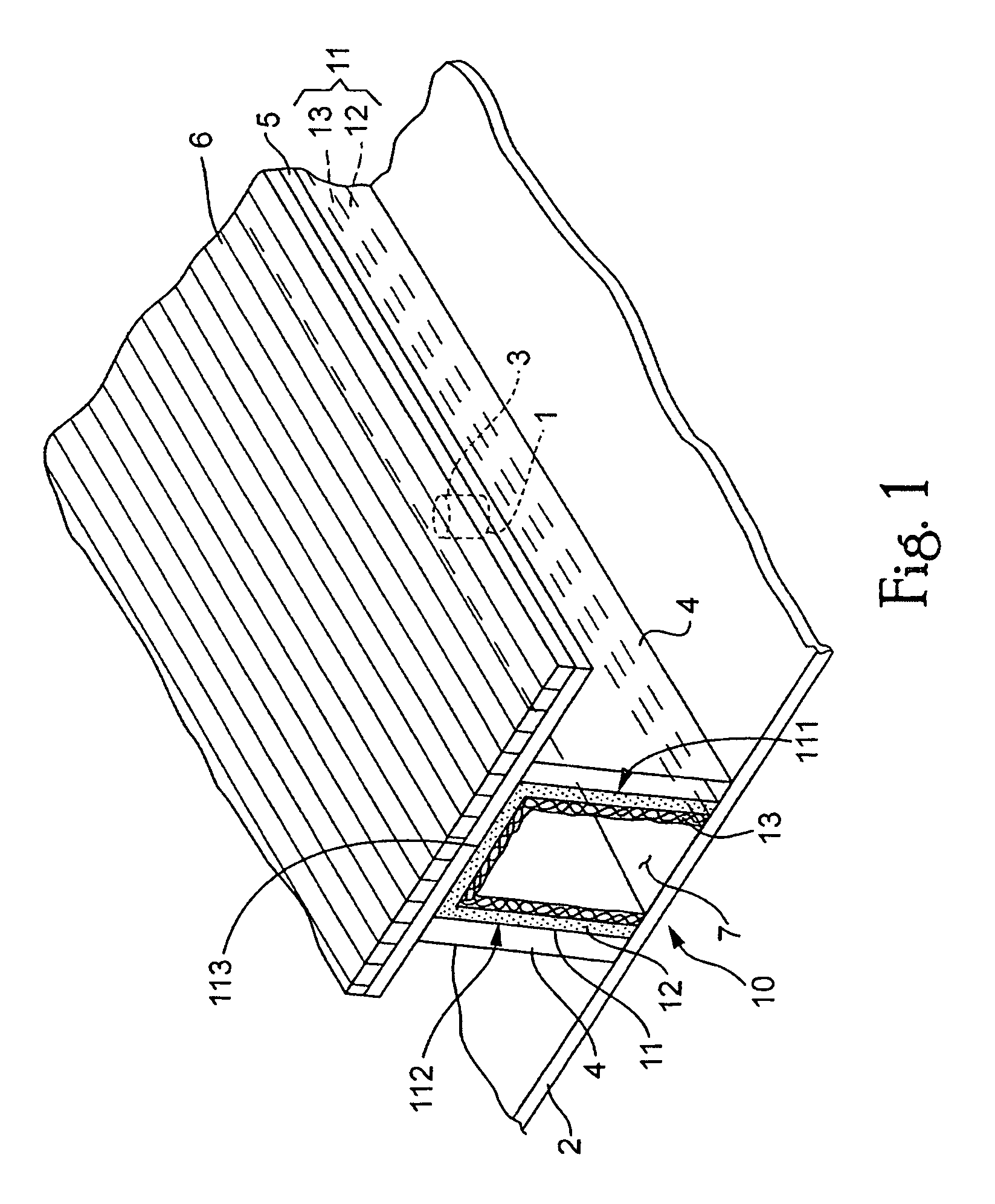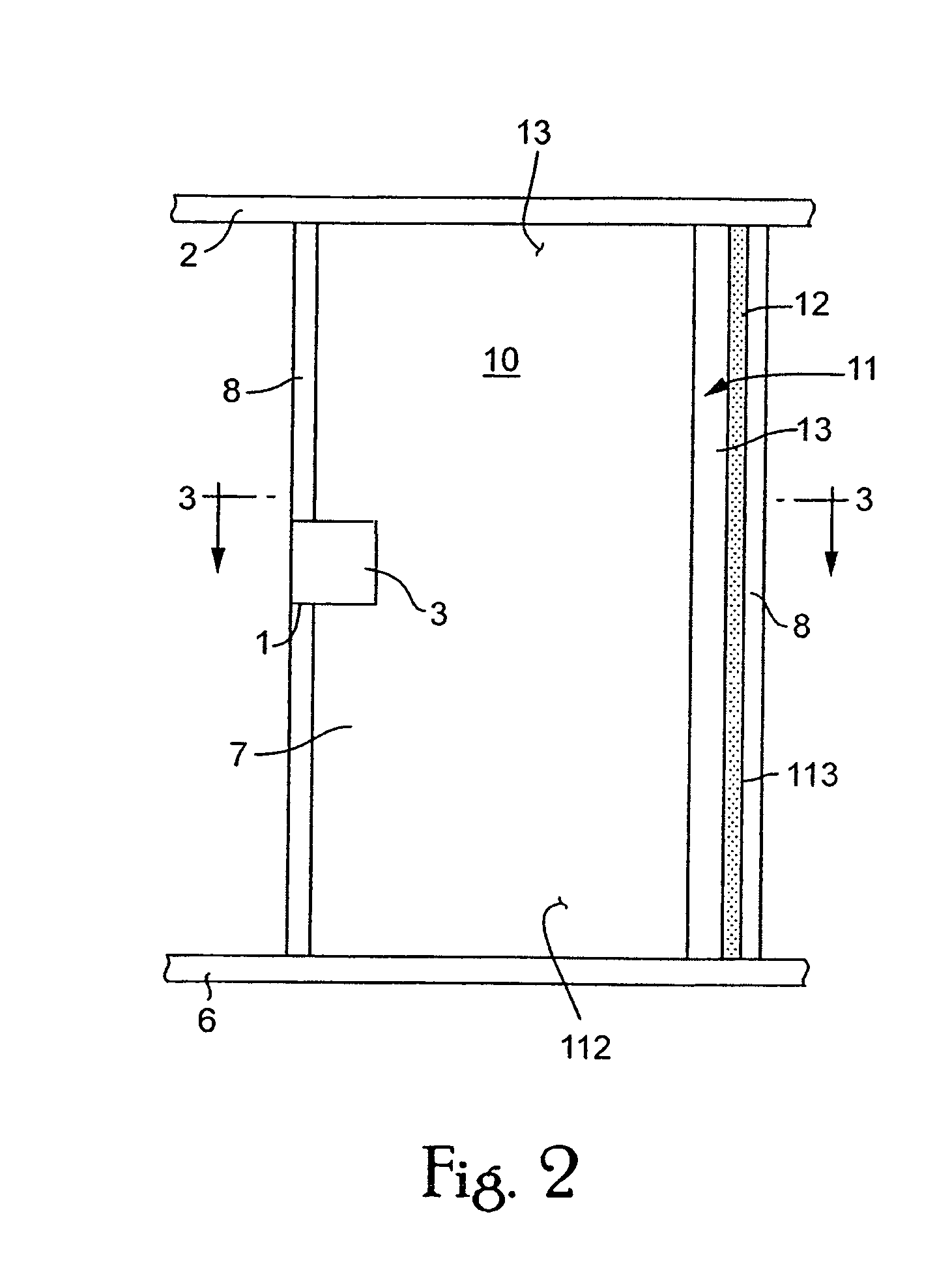Perforation acoustic muffler assembly and method of reducing noise transmission through objects
a technology of acoustic muffler and perforation, which is applied in the field of attenuating noise systems, can solve the problems of noise entering the room or space, adverse impact on the transmission loss, etc., and achieve the effect of allowing heat dissipation
- Summary
- Abstract
- Description
- Claims
- Application Information
AI Technical Summary
Benefits of technology
Problems solved by technology
Method used
Image
Examples
example 1
[0024]The frequency f of concern is 500 Hz. The velocity of the sound wave vw is 1100 ft / sec. Using this information, the approximate desired length of the muffler 11 can be determined.
λ=1100 ft / sec / 500 Hz=2.2 ft
The NRC coefficient for a material for using in absorbing sound waves with a frequency f of 500 Hz is 0.85.
β=2λ / NRC=2(2.2 ft) / 0.85=5.2 ft
The minimum length of the muffler 11 is approximately 5.2 ft with the mechanism 3 being located approximately in the center of the muffler 11 (i.e., ½β as shown in FIG. 4). This determined minimum length of the muffler 11 will provide adequate noise attenuation whereby the sound waves will be absorbed prior to exiting the muffler 11 and can provide sufficient space to permit ventilation of the mechanism 3 and dissipation of any heat emitted from the mechanism 3.
example 2
[0025]The frequency f of concern is 125 Hz. The velocity of the sound wave vw is 1000 ft / sec. Using this information, the approximate length of the muffler 11 can be determined.
λ=1100 ft / sec / 125 Hz=8.8 ft
The NRC coefficient for a material for using in absorbing sound waves with a frequency f of 125 Hz is 0.65.
β=2λ / NRC=2(8.8 ft) / 0.65=27 ft
The minimum length of the muffler 11 is approximately 27 ft with the mechanism 3 being located approximately in the center of the muffler 11 (i.e., ½β as shown in FIG. 4). This determined length of the muffler 11 will provide adequate noise attenuation whereby the sound waves will be absorbed prior to exiting the muffler 11 and can provide sufficient space to permit ventilation of the mechanism 3 and dissipation of any heat emitted from the mechanism 3.
[0026]The equation for β above will result in muffler 11 absorbing substantially all of the noise generated by mechanism 3. However, ceiling 2, wall 8, joists 4, etc. will not block all of the noise g...
PUM
| Property | Measurement | Unit |
|---|---|---|
| velocity | aaaaa | aaaaa |
| frequency | aaaaa | aaaaa |
| length | aaaaa | aaaaa |
Abstract
Description
Claims
Application Information
 Login to View More
Login to View More - R&D
- Intellectual Property
- Life Sciences
- Materials
- Tech Scout
- Unparalleled Data Quality
- Higher Quality Content
- 60% Fewer Hallucinations
Browse by: Latest US Patents, China's latest patents, Technical Efficacy Thesaurus, Application Domain, Technology Topic, Popular Technical Reports.
© 2025 PatSnap. All rights reserved.Legal|Privacy policy|Modern Slavery Act Transparency Statement|Sitemap|About US| Contact US: help@patsnap.com



